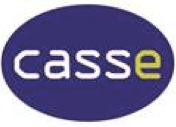The importance of literacy!
February 18, 2014Time for Abbott to live up to his words
February 18, 2014by Pamela Nathan
The PM has set a target of bridging the gap in school attendance between indigenous and non-indigenous pupils within 5 years. The government has funded truancy officers in 40 remote schools. Delivering the annual Prime Minister’s report on progress in closing the gap in health, education and employment, Mr Abbott told Parliament on Wednesday these efforts would be “doomed to fail” unless every child attended school every day.
I agree with Donna Ah Chee , CEO of Central Australian Aboriginal Congress, as posted in the NACCHO CTG member response: NT only jurisdiction on track to close the gap by 2031, who has queried the value of attendance achieving educational outcome and agree with her emphasis that school needs to be a place where kids want to be and not where they have to be:
“Although the addition of a new target on closing the gap in school attendance rates may be useful, Congress is disappointed that the new target was not more directly focused on closing the gap in actual educational outcomes. Attendance at school is important but it’s only a means to a successful outcome which is completing year 12 studies and being fully literate and numerate. If children have entered school without the developmental capacity to learn and do well then attendance alone will not be sufficient to address the gap in educational and employment outcomes.”
“Congress suggested that the new target could have been to close the gap in the Australian Early Development Index scores of children aged five years, as this is the key to closing the gap in both school attendance and successful educational outcomes. We need a “bottom up” strategy to addressing school attendance which ensures our kids enter school capable and ready so that school is where they want to be, not where they have to be.”
School attendance lists are subject to statistical manipulation and false successes – I have been told the roll can be called first thing, when all kids are present, and by morning tea half, if not more, have left. Moreover, a punitive approach is not one which helps kids find a place and a school home for them. Healthy learning is achieved by healthy, creative, emotional experiences and in turn, good emotional experiences can be achieved by learning!





